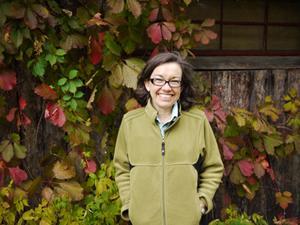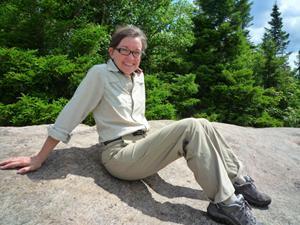Meet EPA Scientist Marie O'Shea, Ph.D.

EPA Scientist Dr. Marie O'Shea is Region 2's Liaison to the Agency's Office of Research and Development (ORD). Marie spent the first half of her EPA career doing research on urban watershed management, focused on characterizing and controlling nutrients in stormwater runoff.
In recent years, Marie has worked on building partnerships and collaborative opportunities between ORD and regional scientists, and seeking to identify and communicate EPA science that can address regional priorities.
How does your science matter?
I'm one of the Agency's ten Regional Science Liaisons (RSLs). My job is to facilitate communication and build partnerships between my region and scientists in EPA's Office of Research and Development (ORD). As part of this effort, I also communicate the science needs of our region to ORD and seek out ORD tools and technologies that can address our needs and improve and inform regional decision making.
- Regional Science Liaisons (RSLs) Fact Sheet (PDF) (1 pp, 370 K, About PDF)
My role is an important one because of its focus on communication and collaboration, which are critical elements to this and any other organization. By serving as a link between the regional office and the research arm of EPA, I can help our region, along with our state and community partners, obtain the science and tools they need to solve the environmental and health problems they face.
If you could have dinner with any scientist, past or present, who would you choose and what would you ask them?
My pick would be Rachel Carson. She was a scientist and a public servant and also a gifted and persuasive communicator. By raising public awareness of the issues that were of concern to her and others, she empowered the public to demand a cleaner and healthier environment. I’d like to seek her advice on how scientists of this generation can be more effective at communicating the problems that threaten our health and the health of our planet.

What do you like most about your research?
Having started out in the water field, I’ve now had had the opportunity to learn about what the rest of what EPA does, which I have really enjoyed. I also love focusing on communication, and having the opportunity to enable regional scientists to partner with ORD scientists to do research that addresses the science needs of their program.
Tell us about your background.
I went to Reed College in Portland, Oregon. I was one of a handful of students studying to operate the Reed Reactor, a nuclear reactor that’s part of the chemistry department. I majored in Chemistry and Physics. I later went to New York University where I received my Ph.D. in Physical Chemistry.
If you were not a scientist, what would you be doing?
I have always had a love of art and architecture. I would have probably enjoyed working as an architect or in architectural conservation.
Any advice for students considering a career in science?
If you love problem solving, math, or field work, you should absolutely consider science as a career. Take advantage of internships and summer programs to test out areas you think you may be interested in. And don’t forget about developing your writing skills! Writing is an important way to communicate your work and you will benefit from being good at it.
Editor's Note: The opinions expressed herein are those of the researcher alone. EPA does not endorse the opinions or positions expressed.
